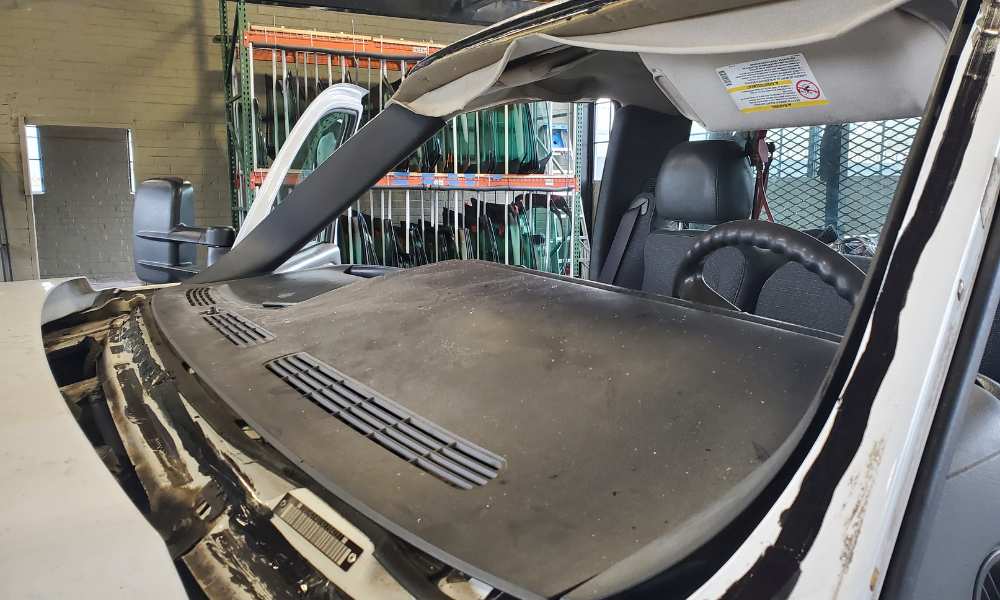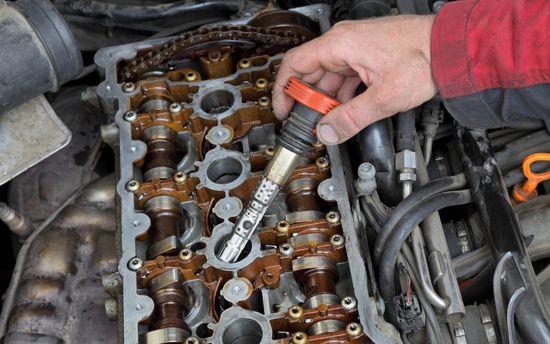The Science Behind Auto Glass Damage: What Can and Can’t Be Repaired on the Go

Auto glass damage is a common issue that many vehicle owners encounter at some point in their lives. Whether it’s a small chip from a flying rock or a larger crack from a collision, understanding the science behind auto glass damage and what can and can’t be repaired on the go is essential for maintaining the safety and integrity of your vehicle. In this comprehensive guide, we’ll delve into the various types of auto glass damage, the repairability of each, and the importance of timely repairs.
Types of Auto Glass Damage
Before we explore the science behind auto glass damage, let’s familiarize ourselves with the various types of damage that can occur:
1. Chips:
- Bullseye: Circular damage with a dark center.
- Star Break: A series of short radial cracks emanating from the impact point.
- Half-Moon: A partial, semi-circular crack.
- Combination Break: A combination of various chip types.
2. Cracks:
- Edge Crack: A crack that begins within two inches of the edge of the windshield.
- Stress Crack: Caused by extreme temperature fluctuations or structural stress.
- Long Crack: Extends beyond 6 inches and can be either straight or curved.
- Floater Crack: Located away from the edges and typically requires immediate attention.
3. Scratches:
Superficial surface marks that may affect visibility but don’t penetrate the glass.
4. Pitting:
Small, shallow divots caused by road debris and sand.
Now that we’ve identified the different types of auto glass damage, let’s explore the science behind each and determine what can and can’t be repaired on the go.
The Science Behind Auto Glass Damage
Auto glass is primarily composed of laminated safety glass for windshields and tempered glass for side and rear windows. Understanding the structural differences between these types of glass is crucial to evaluating repairability.
Laminated Safety Glass (Windshields):
Laminated safety glass is constructed by sandwiching a layer of polyvinyl butyral (PVB) between two layers of glass. This design offers several advantages, including:
- Impact Resistance: The PVB layer absorbs and disperses impact energy, reducing the risk of shattering upon impact.
- Durability: Laminated glass is less prone to cracking and provides structural integrity to the vehicle.
- Optical Clarity: Even when chipped or cracked, laminated glass maintains visibility due to the PVB layer.
Tempered Glass (Side and Rear Windows):
Tempered glass undergoes a unique manufacturing process that enhances its strength and safety characteristics:
- Heat Treatment: Tempered glass is heated and rapidly cooled to create internal stresses, increasing its strength.
- Break Pattern: When tempered glass breaks, it shatters into small, relatively harmless pieces, reducing the risk of injury.
With this foundational knowledge, let’s delve into what can and can’t be repaired on the go.
What Can Be Repaired On the Go?
Small Chips (Bullseye, Star Break, Half-Moon): In many cases, small chips can be repaired on the go using resin injection methods. This involves filling the chip with a specialized resin that cures and bonds with the surrounding glass, restoring structural integrity and visibility.
Surface Scratches and Pitting:
Light surface scratches and pitting can often be buffed and polished to restore optical clarity. However, deep scratches that compromise the integrity of the glass may require replacement.
Edge Crack (Within Two Inches):
Depending on the location and size of the edge crack, some can be repaired. However, it’s essential to consult with a professional technician for an accurate assessment.
Stress Crack (Limited):
If a stress crack is relatively small and not in the driver’s line of sight, it may be repairable. However, stress cracks are often indicative of underlying structural issues, so a professional evaluation is necessary.
What Can’t Be Repaired On the Go?
Long Cracks (Over 6 Inches):
Long cracks significantly weaken the structural integrity of the glass and cannot be adequately repaired on the go. A full windshield replacement is typically required.
Floater Cracks:
These cracks, located away from the edges, usually indicate substantial stress on the glass. Repairing them is seldom feasible, and replacement is the recommended course of action.
Extensive Damage:
If the auto glass damage is too extensive, such as multiple large cracks or severe shattering, repair may not be possible or cost-effective. Full replacement is the safest option.
Damage in the Driver’s Line of Sight:
Any damage, including chips and cracks, that obstructs the driver’s line of sight should not be repaired but rather replaced. Visibility is paramount for safe driving.
The Importance of Timely Repairs
Understanding what can and can’t be repaired on the go is crucial, but equally important is the timing of repairs. Here’s why timely repairs matter:
1. Safety:
Auto glass plays a crucial role in the structural integrity of your vehicle and the proper deployment of airbags. Delaying repairs can compromise safety in the event of an accident.
2. Prevention of Further Damage:
What starts as a small chip can quickly spread into a larger crack due to temperature changes, road vibrations, or additional impacts. Timely repairs prevent further damage and the need for costly replacements.
3. Legal Compliance:
In many regions, driving with significant auto glass damage is illegal. Ignoring repairs can result in fines or citations.
4. Insurance Coverage:
Many insurance policies cover auto glass repairs at little to no cost to the vehicle owner. Prompt repairs can save you money and prevent your insurance premiums from increasing.
The Role of Professional Technicians
While some minor auto glass repairs can be attempted by vehicle owners, it’s essential to recognize the limitations of DIY kits. Professional technicians have the expertise, tools, and materials needed to assess the damage accurately and provide safe, effective repairs. When in doubt, it’s best to consult with a certified auto glass technician.
Conclusion
Auto glass damage is a common occurrence, and understanding the science behind it is crucial for making informed decisions about repairs. Small chips and surface damage can often be repaired on the go, but extensive cracks, especially those in the driver’s line of sight, require professional replacement. Timely repairs not only maintain safety but also prevent further damage and potential legal issues.
At GlassFixit, they prioritize your safety and provide professional auto glass repair and replacement services. Don’t compromise on the integrity of your vehicle’s glass—reach out to our experienced technicians for a thorough assessment and expert repairs. Remember, when it comes to auto glass damage, knowledge, and timely action are your best allies on the road to safety and clarity.
Call GlassFixit at (408) 565-5523 for mobile auto glass repair anywhere in the Bay Area.
Related Articles

Unlocking the Mystery: How Long Can Car Tyres Last?
Understanding how long your tyres can last and the factors that influence their lifespan is crucial for ensuring a smooth and secure driving experience. Join us as we explore the various elements that determine tyre longevity, from driving habits and road conditions to maintenance practices and tyre quality. Get ready to unlock the secrets behind how long your car tyres can truly last.

Tesla Self-Driving Explained: What You Need to Know
While Tesla’s advancements in this field are impressive, it’s crucial to understand the capabilities and limitations of its self-driving system. In this comprehensive guide, we delve into what Tesla’s Full Self-Driving entails, separating fact from fiction and shedding light on the realities of autonomous driving in today’s automotive landscape.

How Often Do Car Dealerships Get New Inventory: A Comprehensive Guide
One common question among car buyers is, “How often do car dealerships get new inventory?” Understanding this aspect can help potential buyers plan their purchase timing and negotiate better deals. In this comprehensive guide, we delve into the intricacies of inventory management in car dealerships and explore the factors that influence the frequency of new inventory arrivals.

Unveiling the Power-Packed Nissan Ariya NISMO: A Japanese Sensation
From enhanced power outputs to finely-tuned performance, join us on a journey through the electrifying transformation of the Nissan Ariya, set to leave an indelible mark on the roads of Japan and beyond. The countdown begins to the arrival of the Ariya NISMO in the United States, as we explore the electrified future of high-performance electric SUVs.




